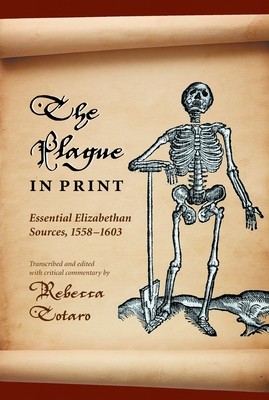
- We will send in 10–14 business days.
- Author: Rebecca Totaro
- Publisher: Penn State University Press
- ISBN-10: 0271087285
- ISBN-13: 9780271087283
- Format: 15.2 x 22.9 x 1.8 cm, minkšti viršeliai
- Language: English
- SAVE -10% with code: EXTRA
Reviews
Description
In The Plague in Print, Rebecca Totaro takes the reader into the world of plague-riddled Elizabethan England, documenting the development of distinct subgenres related to the plague and providing unprecedented access to important original sources of early modern plague writing. Totaro elucidates the interdisciplinary nature of plague writing, which raises religious, medical, civic, social, and individual concerns in early modern England. Each of the primary texts in the collection offers a glimpse into a particular subgenre of plague writing, beginning with Thomas Moulton's plague remedy and prayers published by the Church of England and devoted to the issue of the plague. William Bullein's A Dialogue, both pleasant and pietyful, a work that both addresses concerns related to the plague and offers humorous literary entertainment, exemplifies the multilayered nature of plague literature. The plague orders of Queen Elizabeth I highlight the community-wide attempts to combat the plague and deal with its manifold dilemmas. And after a plague bill from the Corporation of London, the collection ends with Thomas Dekker's The Wonderful Year, which illustrates plague literature as it was fully formed, combining attitudes toward the plague from both the Elizabethan and Stuart periods.
These writings offer a vivid picture of important themes particular to plague literature in England, providing valuable insight into the beliefs and fears of those who suffered through bubonic plague while illuminating the cultural significance of references to the plague in the more familiar early modern literature by Spenser, Donne, Milton, Shakespeare, and others. As a result, The Plague in Print will be of interest to students and scholars in a number of fields, including sixteenth- and seventeenth-century English literature, cultural studies, medical humanities, and the history of medicine.
EXTRA 10 % discount with code: EXTRA
The promotion ends in 22d.04:16:25
The discount code is valid when purchasing from 10 €. Discounts do not stack.
- Author: Rebecca Totaro
- Publisher: Penn State University Press
- ISBN-10: 0271087285
- ISBN-13: 9780271087283
- Format: 15.2 x 22.9 x 1.8 cm, minkšti viršeliai
- Language: English English
In The Plague in Print, Rebecca Totaro takes the reader into the world of plague-riddled Elizabethan England, documenting the development of distinct subgenres related to the plague and providing unprecedented access to important original sources of early modern plague writing. Totaro elucidates the interdisciplinary nature of plague writing, which raises religious, medical, civic, social, and individual concerns in early modern England. Each of the primary texts in the collection offers a glimpse into a particular subgenre of plague writing, beginning with Thomas Moulton's plague remedy and prayers published by the Church of England and devoted to the issue of the plague. William Bullein's A Dialogue, both pleasant and pietyful, a work that both addresses concerns related to the plague and offers humorous literary entertainment, exemplifies the multilayered nature of plague literature. The plague orders of Queen Elizabeth I highlight the community-wide attempts to combat the plague and deal with its manifold dilemmas. And after a plague bill from the Corporation of London, the collection ends with Thomas Dekker's The Wonderful Year, which illustrates plague literature as it was fully formed, combining attitudes toward the plague from both the Elizabethan and Stuart periods.
These writings offer a vivid picture of important themes particular to plague literature in England, providing valuable insight into the beliefs and fears of those who suffered through bubonic plague while illuminating the cultural significance of references to the plague in the more familiar early modern literature by Spenser, Donne, Milton, Shakespeare, and others. As a result, The Plague in Print will be of interest to students and scholars in a number of fields, including sixteenth- and seventeenth-century English literature, cultural studies, medical humanities, and the history of medicine.


Reviews